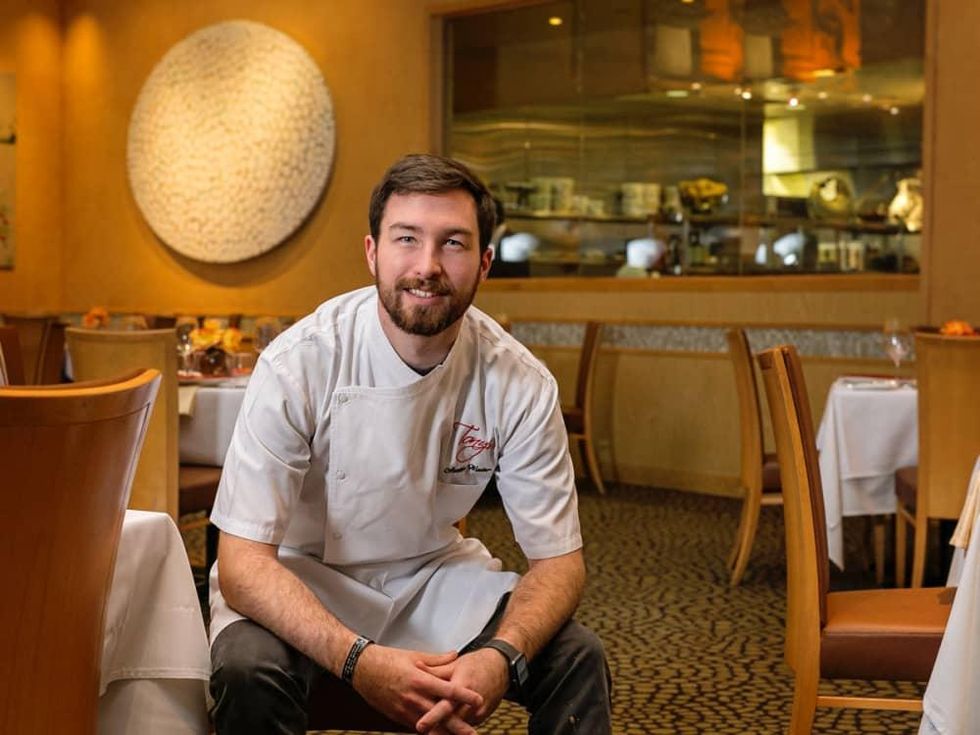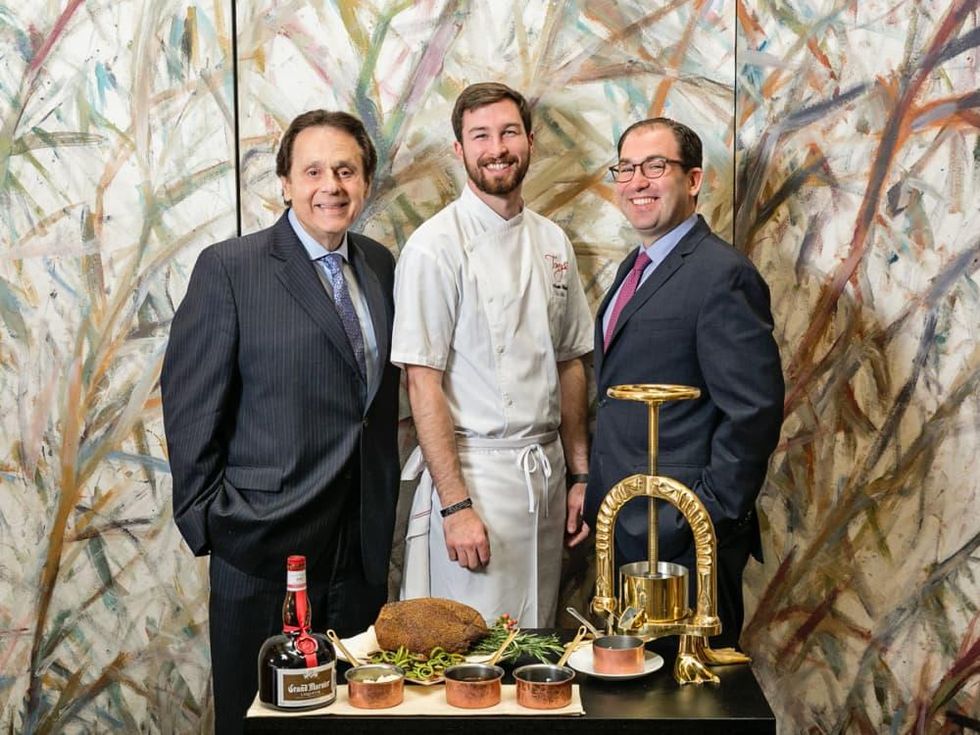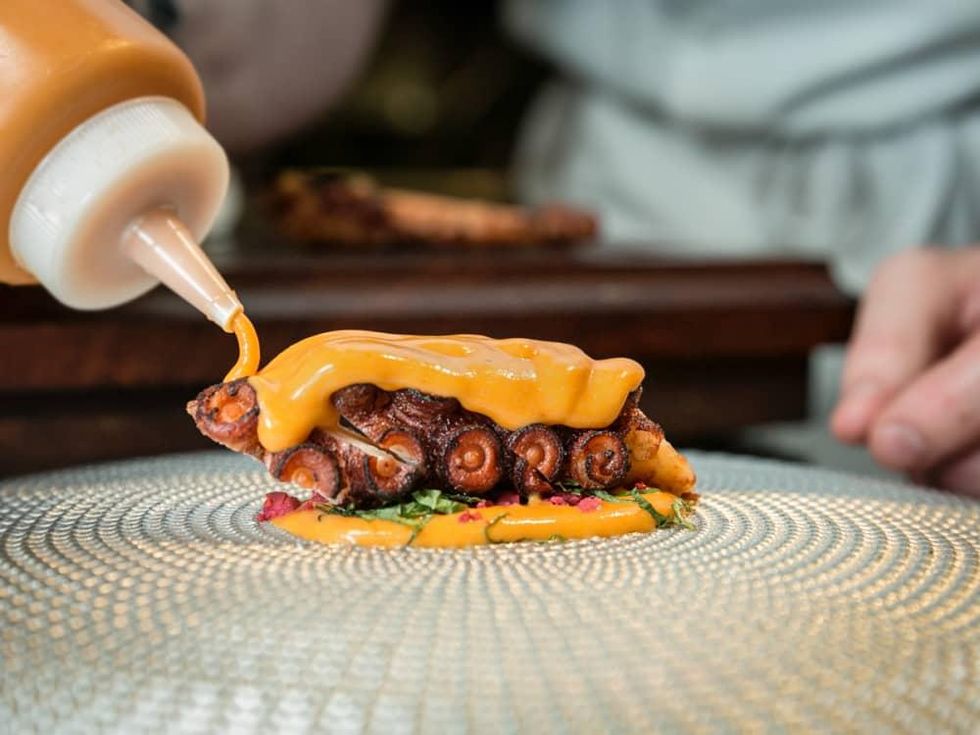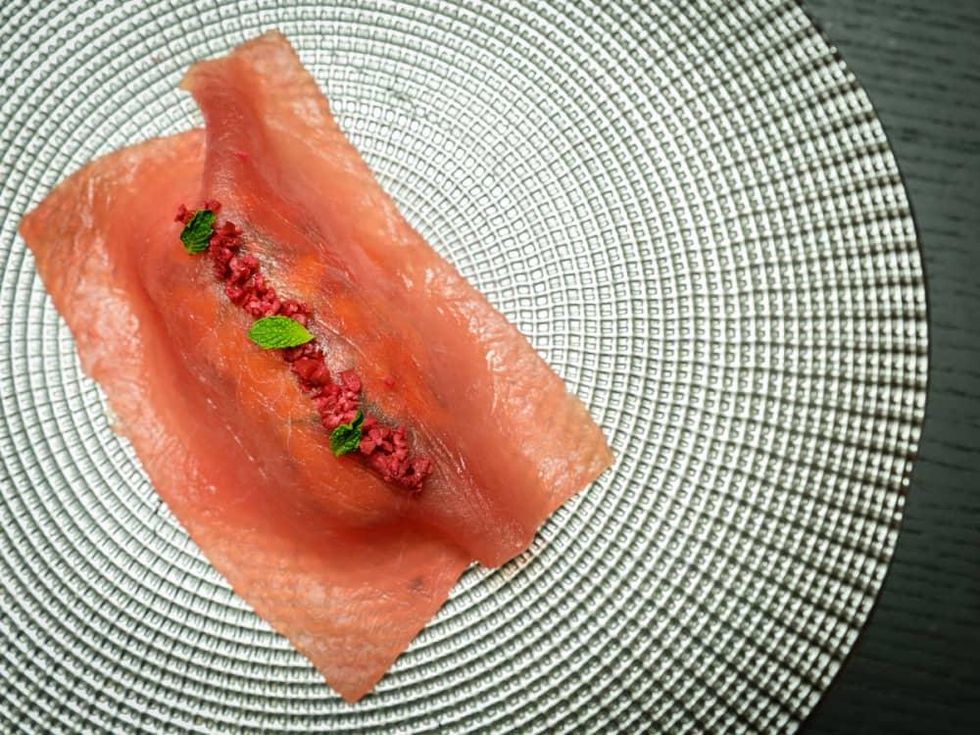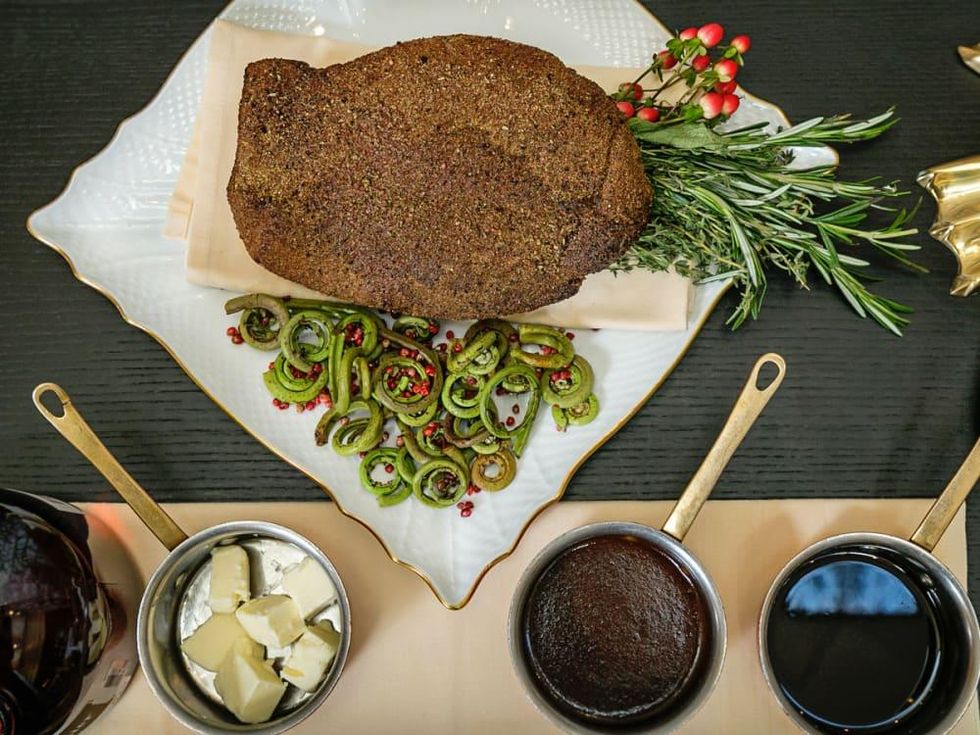pressing forward
Meet the fresh face bringing new buzz to Houston's old-guard culinary landmark
The glamorous and legendary career of Tony Vallone has played out almost more like cinema than real life, and fittingly, as Houston’s most iconic restaurateur, Vallone’s story can be easily divided into three crucial acts. The first act finds him as a young, ambitious entrepreneur in 1965, striving to educate the Bayou City dining public on the cuisine of Naples — at a time when Houstonians viewed Italian food as little more than spaghetti and meatballs and lasagna. But the young man persisted and Houstonians quickly fell in love with his fresh, homemade pasta and seafood.
Cue the second act, in which Tony’s has become Houston’s signature fine-dining restaurant, and indeed, an icon of the city’s Big Eighties zeitgeist, nestled in tony Post Oak. Thanks to Vallone’s flair, his obsessive attention to detail, and his signature elegance in every aspect of kitchen-to-dining-room process, Tony’s is soon mentioned in the same breath as the uber-glamorous Spiaggia in Chicago, Spago in Los Angeles, and Delmonico’s in New York. The elegant eatery is a character in itself, a hallmark of status and power and a home away from home to bolded-name local A-listers and tycoons — all festooned in gala gowns, black tie, and the most haute of couture. Tony’s is a center of power broker deals and upper-crust gossip, and the go-to spot for national and global visiting celebrities and dignitaries. (Every sitting president has dined there.) Vallone is now simply known by adoring guests as Tony, the maestro of Houston’s culinary universe, who with his wife Donna, is a daily fixture in the restaurant.
In this cinematic story arc, it is perhaps Vallone’s third act that is the most dramatic. Unlike so much in Houston’s bygone ’80s era, Tony’s has survived, and even thrived — but with shakeups. In 2005, Vallone elects to move his location to Greenway Plaza to create his ideal kitchen and dining room (eliciting a collective gasp in the dining community). In a celebrated piece of Houston dining history, Vallone names the young Kate McLean as his first female executive chef — “not because she was female, but because she was that good,” he recalls. When McLean departs, Vallone is tasked with finding a new executive chef. He doesn’t look to the hottest name in Houston, nor does he recruit from New York, San Francisco, or Chicago. He doesn’t travel to Italy to pluck a name from Naples (a move that would be apropos, given Tony’s Neapolitan influence).
Vallone turns down big-name inquiries from across the nation, and settles on Austin Waiter, a 26-year-old from Connecticut.
A saucy new face
“Look, we’ve been here for 53 years,” says Vallone as he sits in the refined Tony’s dining room. “This is a milestone place. It’s three generations of families coming here. But for this new generation, it’s not their grandfather’s or father’s restaurant anymore. It’s their restaurant, and we have to evolve.”
A 21-year-old Waiter found Tony’s when he was attending the Culinary Institute of America. Seeking an externship, he bypassed the north and looked south, where his father had recently moved: “Everyone was going to New York, Chicago, to all the big names, and I thought Houston was up-and-coming, it would be nice to go down there and get away from the snow,” he recalls. When Waiter met Vallone, “I realized I couldn’t pass up all that knowledge,” he says. “You realize someone who has a restaurant open for 53 years — someone who can have a restaurant open that long — they really know what they’re doing. And as a young cook, I realized I wanted to learn more than just how to cook. I wanted to learn the business.”
Waiter thrived in his four-month externship and when he graduated, he approached Vallone and managing partner Scott Sulma for a job. “His ability to create and use ingredients and products with purpose is unmatched in the 14 years I’ve been with Tony,” says Sulma. “Where one chef sees the need for nine ingredients for a dish, Austin sees five. That’s something that takes years to learn.”
Vallone, for his part, noticed something else: “It’s all about the eyes,” he says. “You’ve got to have the hands, but it’s the eyes you watch. I spend a lot of time in the kitchen. When the staff’s eyes are with us, and they’re watching us from their station, and they’re seeing what we’re doing, then you know you have something good.”
And it was Waiter’s love of sauce that cemented the deal. “I’m a saucier at heart,” says Vallone. “The heart of any restaurant is the dining room. But its very soul is the kitchen, and the common denominator of that soul, there, is soups and sauces. If you can handle those two, you’ll have a great kitchen.”
Waiter shot up the customary restaurant ranks, from line cook to sous chef, to executive sous chef, then chef de cuisine in 2017. “I made sure he knew that we’re a guest-driven restaurant, as opposed to a chef-driven restaurant,” says Sulma. “If you’re out with family and friends, and you don’t like that dish, it doesn't matter how much Tony Vallone and his 53 years, me and my 14 years or Austin and his four years, like it. If it doesn’t deliver to the guests, it doesn’t matter what we feel about it.”
What’s new is old
With some “theater” and classic dishes, Waiter, Vallone and Sulma are bringing the old and making it new. “We’re doing sweetbreads, which is very old and popular in Europe but not as much so here,” says Vallone. “We’re bringing in baby, milk-fed pigs we’re doing as a chop and a porchetta. We’re bringing in milk-fed baby lambs. And a lot of table service; it’s coming back in. It’s good to have a little theater at the table. And it’s our job to choreograph this, both in taste, service and presentation — because we eat with our eyes first.”
Waiter hopes that diners eat up his latest dish with their eyes when he describes the Pulpo in Camicia. The dish features crispy, braised octopus (done as a confit and crisped in a cast iron pan). Waiter then dresses octopus with heirloom tomato Tonnato sauce, mint, Cerignola olives, and Calabrian chili. Then, the chef lays a “shirt” of thinly sliced ahi tuna from Hawaii (which is dressed in saba, a sauce made of cooked-down grape skins), and garnished with olives and mint.
Waiter notes that the dish represents “everything about the new Tony’s approach” because the dish is elegant, but it’s playful — from the name, to how it’s plated. When it came time to choose a plate for the dish, Sulma “came down with the ugliest dish I had ever seen,” recalls Waiter. “But then he flipped it over, and it was this spider web pattern — the most fantastic plate. So it’s plated on an upside-down dish. We’ve really worked hard on this dish; and it really represents the way we look at these things now.”
The trio is also proud of their latest acquisition: a duck press — a fixture of classic cuisine. “Duck presses are hard to find and they’re expensive pieces of kitchen equipment,” says Waiter. “You don’t walk into a restaurant expecting to see one, but we want to bring the old, classic techniques into the new era. Mr. Vallone used to make these dishes when they were first coming about, and I’m excited about updating them.”
Espresso and Instagram
There’s a glint in Vallone’s eye when he describes his “partnership” with his chef de cuisine. “In spite of all the years between us — and I’m old enough to be his grandfather — we have a friendship and a camaraderie, and I have the utmost respect for him,” says Vallone. “He works like someone who’s decades older than he is — he’s a genius.”
Waiter says he, Sulma, and Vallone “talk shop all day, every day,” and that he and Vallone bond the moment Vallone walks in the door. “We text all the time and he’s on Instagram,” Waiter says of his mentor. “We sit and drink eight to 10 espressos a day — no joke, we just keep them coming while we talk. We travel a lot together and it’s like a family trip where we just happen to be working. I feel comfortable talking him about everything; he’s been a good role model, not just in food or business, but in life.”
So in the story arc, does a young Waiter venture out on his own, much like his mentor? “At some point it’s every chef’s aspiration to own their own place,” admits Waiter, “but I’m no hurry. Mr. Vallone has taught me to evolve, and to respect the business aspect of this industry. He’s been open almost twice as long as I’ve been alive. I just want to make good food, and consistently make people happy. Just like him.”
